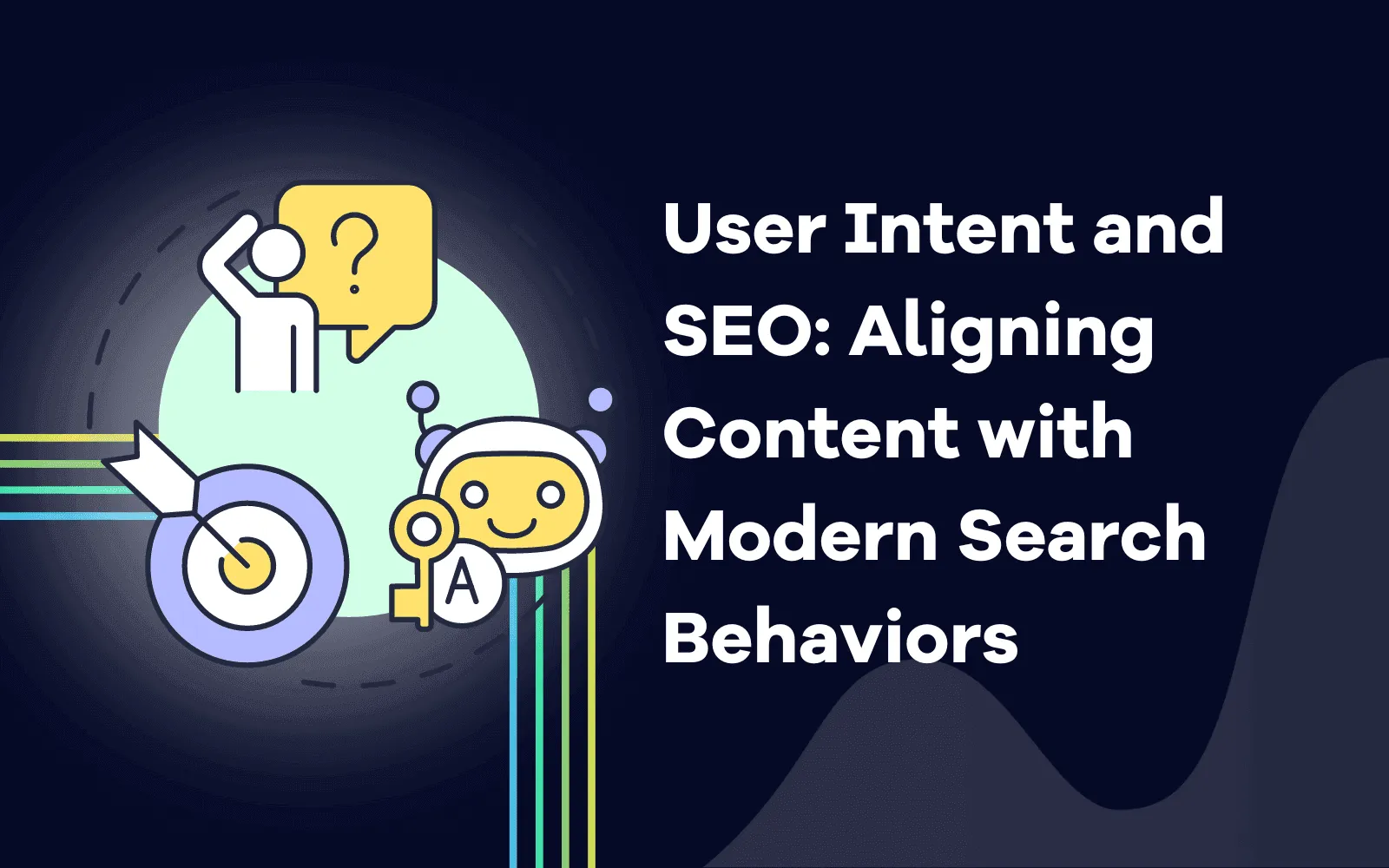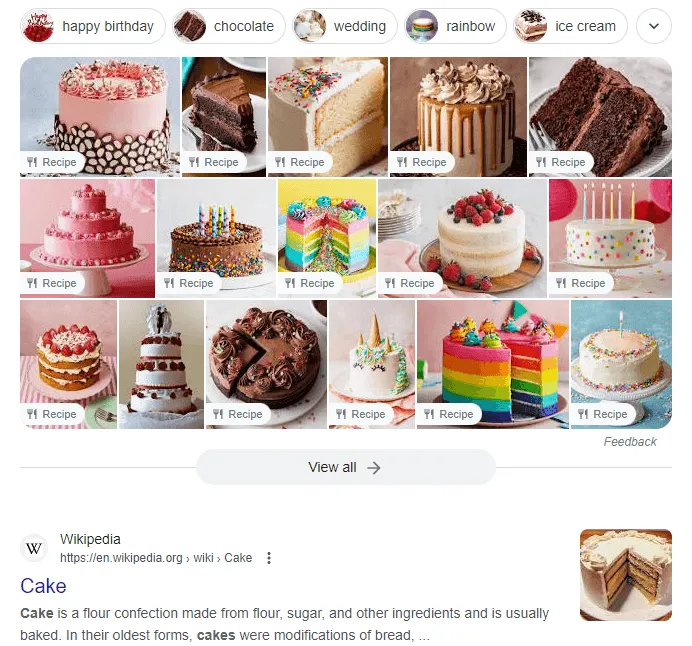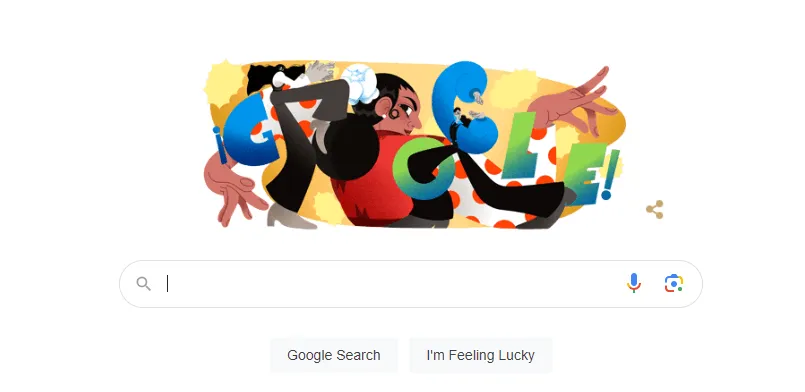
User Intent and SEO: Aligning Content with Modern Search Behaviors

Nikola Baldikov
November 28, 2023
Unlock the secrets to SEO success by aligning your content with modern search behaviors. Stay ahead in the ever-evolving world of search with our expert insights.

There are over 25 search engines in the world today, and the number is growing. However, Google ranks among the top with a market share of 90.6%.

With a majority of the world’s population using this massive online knowledge base, it’s only natural to focus on aligning user intent with Google searches.
But what is user intent, and why is it important? Moreover, what are the different levels of search and types of search intent in the dynamic and constantly evolving world of search?
These are just some of the questions that we seek to answer in this article. Stick around to find out more!
What is user intent in SEO?
Search engine optimization (SEO) aims to determine what user intent for a given topic is and cater to those search needs.
But what exactly is user intent? We can look at it as the goal behind a search, a broader purpose of finding information to address a certain need.
It goes beyond entering keywords into Google’s search bar.
It’s also about producing content that is relevant to the user’s end goal and also helping Google’s algorithm to rank your website’s helpful pages higher.
The main reason behind this is to help users find it more easily without having to scroll through multiple pages. In other words, the quicker they find what they are looking for, the better the user experience.
The world of search has rapidly evolved with the Google algorithm focusing on helpful content. This helpful content is also about being timely, relevant, and authoritative.
Each of these factors plays a role in the delicate balancing act between what type of content is published, what type of content ranks on Google, and what type of content is helpful for users.
A great example of this is the search for the word “cake.”

Source: Google.com
For instance, such a search can result in producing top recipes for cakes (including how-to videos), it can describe the history of cake making, it can provide images of cakes, it can offer wedding cake suggestions, and a whole lot more.
It’s about entering keywords that Google will understand the main purpose of and then produce those results that are the most relevant to the user’s query.
Why is user intent important?
There are many reasons why user intent is important—both for search engines and for an SEO specialist’s content strategy.
Here is a brief breakdown of the reasons why user or search intent and behaviors are essential pieces of the SEO and search engine puzzle.
Boost your content strategy: When you target keywords that align with your audience’s needs, you can create more relevant content.
Increase your search engine rankings: Creating and publishing high-quality content that is relevant to your users means that Google’s bots will recognize it as such and rank your page higher in the search engine results page (SERP).
Help meet Google’s primary goal: One key factor in accurately catering to search intent is that you’ll be directly helping Google meet its primary goal: satisfying search intent. Because it’s a goal for Google to prioritize and rank relevant and helpful content, it should be a priority for SEO specialists as a natural extension.
Expand your reach: The marketing funnel aims to educate audiences and ultimately convert them. However, this requires knowing where in the funnel they are. By expanding your reach across funnel stages, you can boost your chances of creating higher conversions through more accurate and tailored content.
Improve the overall user experience: When you provide your users with content that is helpful and hits the nail on the head in terms of what they need, they are much more likely to click through to your website. In turn, this increases your engagement metrics, which helps your site, too.
Levels of Search
There are several levels of search SEO specialists should be aware of. However, the primary ones are:
#1. Keyword search
This is one of the most regarded and popular search levels. It makes sense why this is the case because Google users search using keywords. These searches are carried out when a user enters a keyword into the Google search bar to find a certain set of results.
What happens on the back end is that Google will try to match the keywords entered by the user to articles with high relevance that feature the same or highly similar keywords in close proximity to each other.
Google’s algorithm takes into account the number of times a word is found within a document, the total percentage the word makes up in the documents, and, on average when two words are searched, how close they are to each other in the text.
#2. Semantic search
Another layer added on top of keyword search is semantic search. Through this layer, Google compares concepts in different results to determine relevance. For example, someone looking for a “warm jacket” may type those words in a Google search bar.
However, the results that will appear will include relevant searches that include results such as “winter coat”, even though these were not the exact keywords that the user input into the search bar.
This type of search is carried out through vector embeddings, which are found in a vector datastore index. When a search happens, a vector embedding of the search query takes place, it is compared to the potential results in the data store, and finally, the closest matches within the index are found.
#3. Behavioral search
Next up is behavioral search, which uses external signals and analytics to provide relevant results.
What happens is that search engines capture user behavior, contextual insights, and macrographic trends on a continuous basis, creating feedback loops that constantly optimize the results, offering a more personalized experience.
Using external signals to predict the best fit, search engines will be able to use a simple and basic search to give users tailored results.
Types of Search Intent
Apart from the levels of search, there are also different types of search intent. In brief, these are:
Informational: This is when a search query seeks to find educational and helpful information. It’s often posed as a question. The answer should demonstrate expertise, authoritativeness, and trustworthiness to help websites improve their rankings.
- Navigational: A navigational search query seeks to take the user to a specific place. This can be a website, a web service, an app, or something else, such as local searches for businesses offering certain products or services.
- Commercial: With a commercial intent, users essentially are looking to make a choice about what to buy and are considering their options. Here, useful results will show product information, reviews, and comparisons.
- Transactional: The last search type centers around the user taking an action. This can involve purchasing a product or a service. They are particularly useful for e-commerce stores, which need to keep SERP features in mind and include transactional keywords to boost their SEO by adapting your strategy accordingly.
How does Google see search intent?

Source: Google.com
Google sees search intent as a constantly evolving puzzle. Although marketers may be convinced of the value of the traditional marketing funnel, Google has a different opinion.
That’s because users often follow an atypical journey and jump between different stages of the funnel. That’s why they do not only rely on a user’s search history but on inferred intent that is based on specific behaviors during a search.
These behaviors may include keywords or modifiers used by a person when they search on Google.
How to optimize and align your content for modern search behaviors
Integrating user intent analysis into your SEO strategy is essential to help steer your users in the right direction and get the results they are looking for. To achieve this, you need to target specific keywords that drive your users to high-quality content based on relevance.
Ultimately, this can increase your click-through rates, improve your conversions, enjoy a lower bounce rate, increase your page views, and reach a wider audience.
Moreover, in an era where cybersecurity threats are omnipresent, incorporating strategies for cyber resilience becomes paramount. Ensuring that your online presence is robust and secure adds an extra layer of protection for both your content and your users.
Ultimately, this dual focus on user intent and cyber resilience can increase your click-through rates, improve your conversions, enjoy a lower bounce rate, increase your page views, and reach a wider audience.
However, bearing the user journey and its modern fluctuations in mind will be crucial. Here are a few of the most important steps to achieve this goal:
Identify your audience, preferably through a buyer persona
Determine what the keyword search intent is
Analyze/audit your existing content for search intent
Be sure to include long-tail keywords in your strategy
Consider using keyword modifiers
Avoid search intent mismatches, e.g., with keywords that have multiple meanings
Study the SERP and analyze intent based on the results for your keyword
Take advantage of fractured intent (multiple types of intent)
Consider the no-longer-linear search journey as a holistic approach
Leverage the power and knowledge of content creators (you might want to set a proper outsourcing strategy to get the most of this)
Analyze and learn from your organic competition
Evaluate and cater to zero-click searches
Study the relevance of high-traffic keywords to your SEO strategy
Use the right tools to help you in the process (including Google Trends, Google Analytics, Answer the Public, Semrush, and Ahrefs, among others)
Optimize all your content to match intent through images, ads, local packs, and other SERP features
Update and repurpose older content
Optimize your website for mobile searches
Similarly, you should optimize your content for voice searches
Prioritize the user experience
Always look at the bigger picture
Conclusion
Modern user intent is evolving, and SEO efforts need to keep up with these developments. SEO specialists need to study the search intent behind keywords and be aware of the different layers of intent, too.
All this should culminate in a stronger SEO approach that brings greater traffic to your desired web pages—whether to drive conversions or increase traffic.
A holistic approach is best. Although it requires a long-term strategy and concerted efforts, it will be worth the endeavor as that’s how you’ll rank higher and stay top of mind for your audience.
Related blog posts

5 LLM Visibility Metrics You Should Track in 2026
SEO is now both about ranking in search engines and being visible in LLMs. We give you five visibility metrics every SEO should track in 2026.
3 December 2025Is LLM Tracking Relevant for You?
LLM tracking is not just for SEOs. It is also relevant for content teams, agencies, marketing leadership, and communication teams. Learn why here.
26 November 2025
How to Find the Best Prompts to Track for AI Visibility
Do you want to start tracking prompts to optimize your AI visibility? We give you seven practical ways to identify relevant prompts to track in LLMs.
9 November 2025
